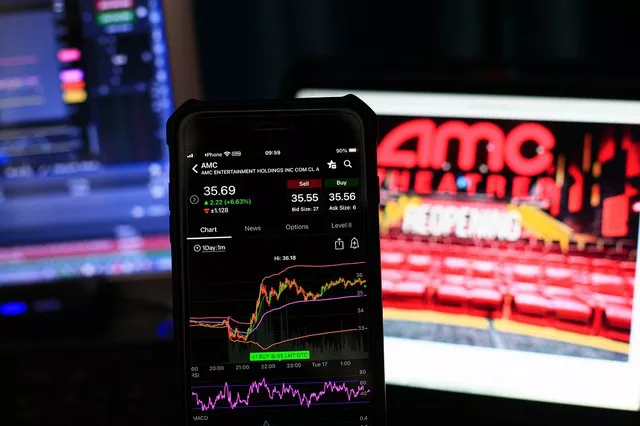Feeder cattle futures are a vital component of the agricultural commodity market, offering a means for producers, traders, and investors to manage and speculate on the future price movements of feeder cattle. These futures contracts serve multiple purposes, from hedging against price volatility to enabling market participants to profit from anticipated price fluctuations.
Understanding Feeder Cattle Futures
Feeder cattle futures are financial contracts that obligate the buyer to purchase or the seller to deliver a specific quantity of feeder cattle at a predetermined price on a future date. These contracts derive their value from the performance of feeder cattle in physical markets. Feeder cattle are young cattle typically raised for beef production. Feeder cattle futures serve various purposes, including risk management, speculation, and price discovery.
1. The Underlying Asset
The underlying asset of a feeder cattle futures contract is feeder cattle, which are cattle raised to a specific weight and age before they are sold to feedlots. These cattle are not yet ready for slaughter but are ready to be fed to reach market weight. They are an essential part of the beef production supply chain.
2. Contract Specifications
Each feeder cattle futures contract has specific contract specifications, including the following:
a. Contract Size: The contract size represents the quantity of feeder cattle covered by a single futures contract. Typically, it is measured in pounds or head, with a standard contract size of 50,000 pounds (approximately 22.68 metric tons).
b. Delivery Location: Feeder cattle futures contracts specify the delivery location where physical delivery of the feeder cattle must occur. Common delivery points include major cattle auctions and approved feedlots.
c. Tick Size: The tick size is the minimum price movement allowed for the futures contract. It determines the smallest increment by which the contract’s price can change.
3. Long and Short Positions
In the world of feeder cattle futures, two parties are involved: the buyer (long position) and the seller (short position). The buyer commits to purchasing feeder cattle at the agreed-upon price when the contract matures, while the seller commits to delivering the cattle. However, many feeder cattle futures contracts are closed out before expiration through offsetting trades, allowing traders to profit from price changes without taking physical delivery.
4. Leverage
Feeder cattle futures contracts offer leverage, allowing traders to control a substantial amount of feeder cattle with a relatively small amount of margin. While leverage can amplify potential gains, it also increases the risk of substantial losses, making risk management crucial when trading feeder cattle futures.
Uses of Feeder Cattle Futures
Feeder cattle futures serve various purposes in the agricultural industry:
1. Risk Management
One primary use of feeder cattle futures is risk management. Producers, feedlots, and livestock operations use these contracts to hedge against adverse price movements. For example, a cattle rancher may use feeder cattle futures to lock in a selling price for their cattle, ensuring price stability in uncertain market conditions.
2. Price Discovery
Feeder cattle futures play a crucial role in price discovery. The prices of futures contracts are influenced by supply and demand dynamics in the futures market, reflecting market participants’ expectations about future feeder cattle prices. These prices can provide valuable insights into market sentiment and direction.
3. Speculation
Traders and investors engage in feeder cattle futures trading to speculate on price movements. By taking positions based on their expectations of market trends, they aim to profit from price fluctuations. Speculators add liquidity to the futures market and help facilitate price discovery.
4. Extended Trading Hours
Feeder cattle futures markets often have extended trading hours compared to regular cattle auctions and cash markets. This extended availability allows market participants to react to news and events worldwide, enhancing market efficiency.
Factors Influencing Feeder Cattle Futures Prices
Several factors impact the prices of feeder cattle futures contracts:
1. Supply and Demand: Changes in the supply of and demand for feeder cattle can have a significant impact on futures prices. Factors such as herd size, cattle production, and consumer demand for beef play a crucial role.
2. Weather Conditions: Weather conditions can affect cattle production by impacting feed quality and availability. Droughts, floods, and extreme temperatures can disrupt cattle raising operations and influence prices.
3. Feed Prices: The cost of cattle feed, including corn and soybeans, can impact cattle production costs and, in turn, feeder cattle prices.
4. Economic Conditions: Economic factors, such as economic growth and consumer spending, can influence demand for beef products and, consequently, feeder cattle prices.
5. Government Policies: Government policies and regulations related to agriculture, trade, and livestock production can have both direct and indirect effects on feeder cattle futures prices.
Conclusion
Feeder cattle futures are a crucial component of the agricultural commodity market, providing market participants with tools for risk management and profit potential. By understanding what feeder cattle futures are, how they work, and the factors that influence their prices, producers, traders, and investors can make informed decisions and navigate the agricultural industry effectively. Feeder cattle futures serve as a valuable resource for ensuring price stability and facilitating efficient price discovery in the dynamic world of cattle production and trading.


